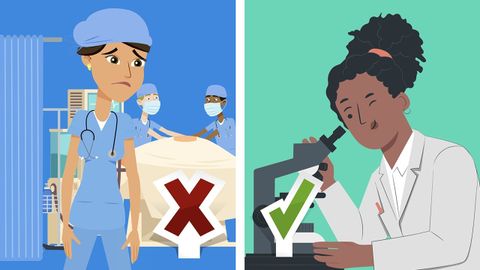
Subtitles & vocabulary
Top 5 Doctor Specialties for INTROVERTS
00
Summer posted on 2022/08/24Save
Video vocabulary
ultimately
US /ˈʌltəmɪtli/
・
UK /ˈʌltɪmətli/
- Adverb
- Done or considered as the final and most important
- Fundamentally; at the most basic level.
B1TOEIC
More introvert
US /'ɪntrəvɜ:rt/
・
UK /'ɪntrəvɜ:t/
- Noun (Countable/Uncountable)
- Person who does not like social contact
- Intransitive Verb
- To turn inward for energy and rejuvenation.
C1TOEIC
More alternative
US /ɔlˈtɚnətɪv, æl-/
・
UK /ɔ:lˈtɜ:nətɪv/
- Countable Noun
- Something different you can choose
- Adjective
- A different choice
A2TOEIC
More description
US /dɪˈskrɪpʃən/
・
UK /dɪˈskrɪpʃn/
- Noun
- Explanation of what something is like, looks like
- The type or nature of someone or something.
A2TOEIC
More Use Energy
Unlock All Vocabulary
Unlock pronunciation, explanations, and filters
